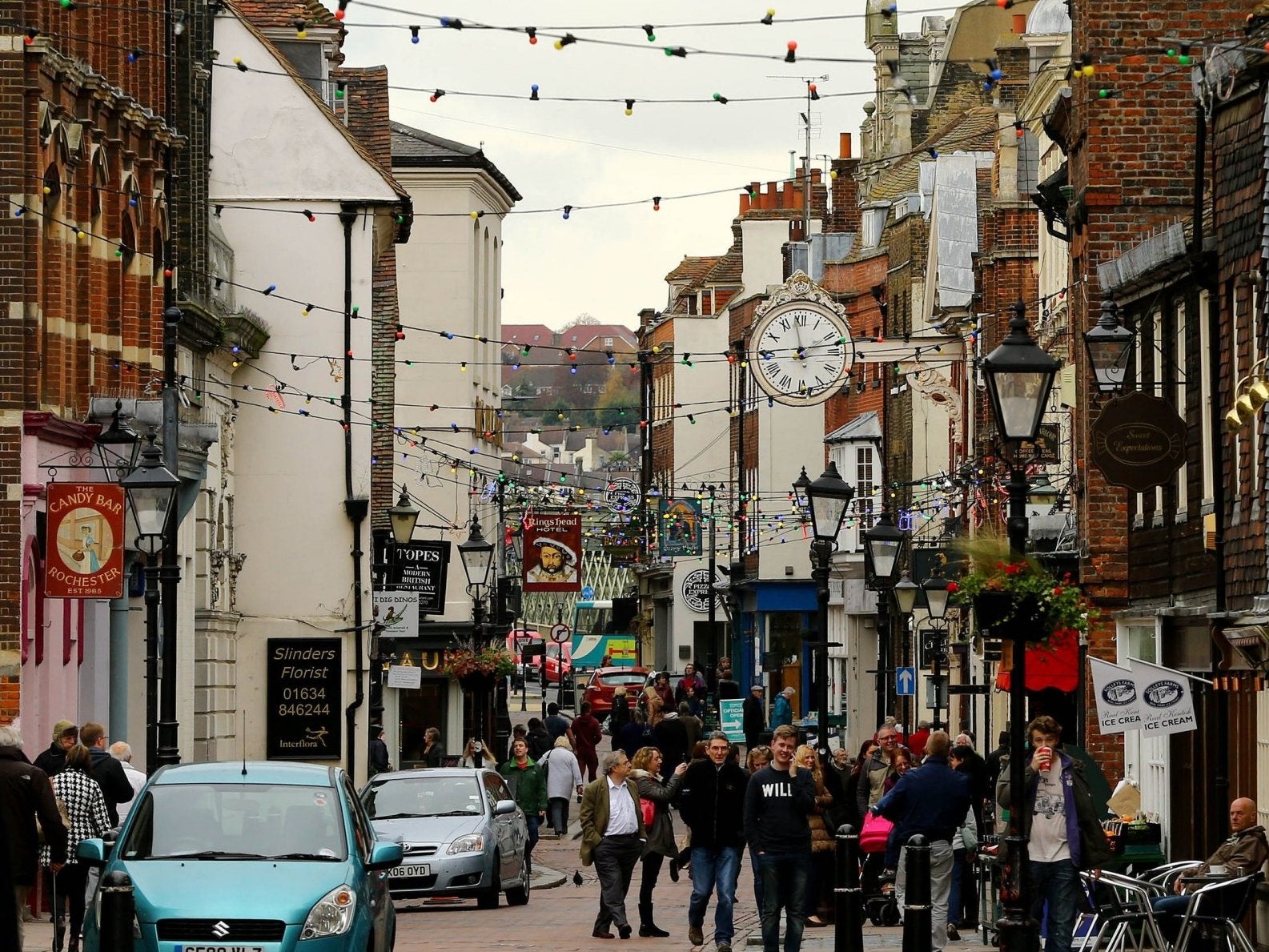UK high streets 'have twice as many shops as they need', says leading retailer
Town centres will not return to how they were 10 or 20 years ago, meaning alternative uses must be found for empty retail premises to create thriving community hubs, government-commissioned report finds

The UK has twice as many shops as it needs, according to the author of a report into how to save the nation’s high streets, which are coming to the end of a dismal year.
Businessman Sir John Timpson, who chaired an expert panel tasked with advising how the government can support traditional retailers, said it is “obvious” that empty shops could be used for housing.
In a report published on Tuesday, he recommended an “upside down government” approach that supports local communities to create their own unique hubs.
A Town Centre Task Force should act as a focal point for finding and sharing new solutions to the nationwide problem of boarded-up shops and lower footfall, Sir John said
He also called on communities to celebrate their town centres with a “National High Street Perfect Day” to tackle litter, clean up graffiti and instil a sense of pride in local areas.
High streets will not return to how they were 10 or 20 years ago, said Sir John, who has five decades of retail experience at the shoe repair and key-cutting business Timpson. Therefore, saving the high street does not mean protecting all shops from closure, but instead finding the best possible uses for the space, he said.
His report envisages town centres of the future that attract people for dining, leisure, sport, culture and the arts, entertainment and medical services, while empty shops are used to alleviate the housing crisis.
“It’s pretty obvious when you go around, there are probably about twice as many shops as we need in this country and we’re short of housing,” Sir John told the BBC. “There is a pretty obvious message there.”
The report highlights a number of “shining examples” that have bucked the downward trend.
In Holmfirth, West Yorkshire, community action was catalysed by successful opposition to a proposed Tesco. Since then a former theatre has been converted into a thriving music venue and local groups organise regular river clean-ups and other conservation schemes.
A local group called Keep Holmfirth Special has participated with an outside organisation on a data project that has enabled them to monitor footfall and vacancy rates in the town. This then informs the group’s strategy for future initiatives.
In Altrincham, branded a ghost town in 2010 after vacancy rates soared to 30 per cent, local traders joined together with the local authority, which provided funding and staff for a partnership called Altrincham Forward.
The Great British High Street: 2018 shortlist
Show all 34Led by a Manchester entrepreneur, new traders have been brought in to the local market, which is now focused more on food, is open at more convenient times and has an active marketing programme. According to the report this has led to the market becoming a “vibrant hub for the town centre, and a model that other centres are now looking to emulate”, according to the report.
Supporting similar initiatives across the country will be a £675m Future High Streets Fund, announced earlier this year by the chancellor.
Solutions are urgently needed as high streets face their toughest Christmas season since the recession. Bricks-and-mortar stores are battling rising rent and rates, fragile consumer confidence and the ever-growing threat of Amazon and other online retailers.
Online sales accounted for more than 20 per cent of UK retail sales for the first time ever last month, which Sports Direct founder Mike Ashley described as the worst month for retailers “in living memory”.
High street footfall dropped 3.8 per cent in November, the twelfth consecutive monthly fall, with a further drop forecast for December.
While sales are rising overall, much of that revenue has been heavily discounted, both on and offline, hurting profitability.
“High streets and town centres play an important role in the life of our communities,” said high streets minister Jake Berry, adding that the government would “carefully consider these recommendations”.
Subscribe to Independent Premium to bookmark this article
Want to bookmark your favourite articles and stories to read or reference later? Start your Independent Premium subscription today.

Join our commenting forum
Join thought-provoking conversations, follow other Independent readers and see their replies